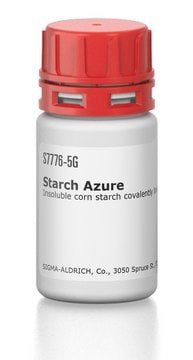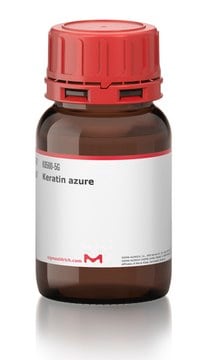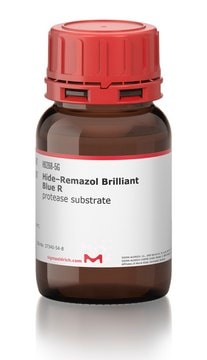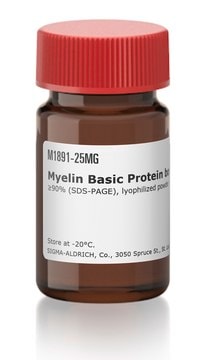S7629
Starch Azure
solid
Synonym(s):
Starch–Remazol brilliant blue R, RBB-Starch, Remazol brilliant blue R dyed starch, Starch Azure
Sign Into View Organizational & Contract Pricing
All Photos(2)
About This Item
Recommended Products
product name
Starch Azure, Potato starch covalently linked with Remazol Brilliant Blue R
form
solid
Looking for similar products? Visit Product Comparison Guide
Application
Starch Azure has been used as a substrate to measure amylase activity in in vitro α-amylase inhibition assay
Biochem/physiol Actions
Starch Azure serves as a substrate for α-amylase activity measurement.
Substrates
Substrate for colorimetric determination of α-amylase.
Storage Class Code
11 - Combustible Solids
WGK
WGK 3
Flash Point(F)
Not applicable
Flash Point(C)
Not applicable
Personal Protective Equipment
dust mask type N95 (US), Eyeshields, Gloves
Certificates of Analysis (COA)
Search for Certificates of Analysis (COA) by entering the products Lot/Batch Number. Lot and Batch Numbers can be found on a product’s label following the words ‘Lot’ or ‘Batch’.
Already Own This Product?
Find documentation for the products that you have recently purchased in the Document Library.
Customers Also Viewed
Antioxidant and antidiabetic properties of Chinese and Indian bitter melons (Momordica charantia L.)
Wang Li, et al.
Food Bioscience, 29, 73-80 (2019)
Physiochemical properties of encapsulated bitter melon juice using spray drying
Wang L, et al.
Bioactive Carbohydrates and Dietary Fibre (2021)
Griselda Ma Chávez-Camarillo et al.
PloS one, 17(3), e0264734-e0264734 (2022-03-02)
The kinetics of growth and α-amylase production of a novel Candida wangnamkhiaoensis yeast strain were studied in single-stage steady-state continuous cultures. This was performed in a split-cylinder internal-loop airlift bioreactor, using a variety of carbon sources as fermentation substrates. Results
C C Swart et al.
Comparative biochemistry and physiology. Part A, Molecular & integrative physiology, 145(1), 114-122 (2006-07-18)
The giant waterbugs are predators that utilize extra-oral digestion and are known to capture a wide variety of prey. Herein we describe the differences in salivary enzyme composition between large and small species of giant waterbug (Lethocerus uhleri, Lethocerinae and
N T Lao et al.
The Plant journal : for cell and molecular biology, 20(5), 519-527 (2000-01-29)
beta-Amylase is one of the most abundant starch degrading activities found in leaves and other plant organs. Despite its abundance, most if not all of this activity has been reported to be extrachloroplastic and for this reason, it has been
Our team of scientists has experience in all areas of research including Life Science, Material Science, Chemical Synthesis, Chromatography, Analytical and many others.
Contact Technical Service









